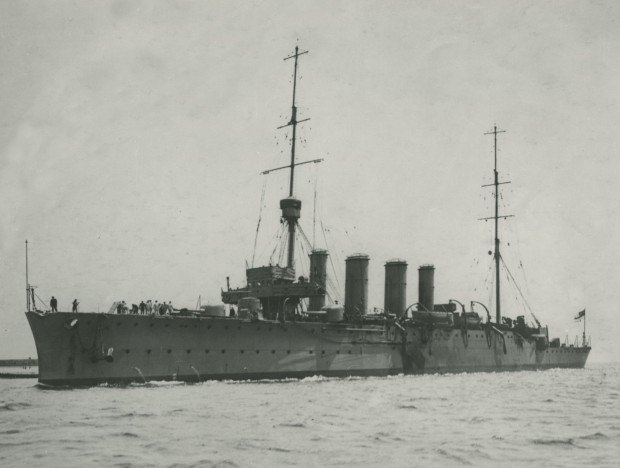
A century ago, the fledgling Australian navy saw its first engagement against an esteemed foe. The Last Gentlemen Of War is an exhibition at the Western Australian Maritime Museum that commemorates The Battle Of Cocos, gathering a wide collection of artefacts, as large as the Sydney’s wheel, to as small and personal as a morphine syringe. X-Press spoke to exhibit curator, Annie Boyd, about the history behind this battle, and the many tales involved.
“The significance of this event for Australia is fairly obvious. Eight days after the troop convoys left Albany in 1914 we had our first ever wartime engagement as the Royal Australian Navy. Now keep in mind that the navy was only 13 months old itself, so it was not only entering war, but it had only been in existence for just over a year. So within a week of leaving for the war, we find ourselves coming up against a German warship, in fact the most famous German warship of them all, the Embden. The result, probably a foregone conclusion. HMAS Sydney was the more powerful ship (faster and more heavily gunned) but that didn’t make any difference, for it was the first time Australia had performed in war, and we were delighted with the results.”
The story from the German side is equally fascinating with the Embden having a brief but glorious career. “The Embden was spectacularly successful in intercepting merchant ships and shutting down what had been a British lake, The Indian Ocean.” Yet it was not success alone that fuelled their reputation. Embden went to great pains to avoid civilian casualties, earning a reputation for civility. “She took 27 ships in 13 weeks. The catch being that she could not go on like that forever. The Embden had no safe port, no way of recoaling, no way of rearming.”
With so many rich stories to tell, from the festival-like atmosphere around the German landing party (complete with happy snapshots by the locals), to the day of the battle itself, Boyd was faced with the challenge of how to convey this. “The basic structure is simple, we have an Extraordinary Day in the central gallery, that focuses on the battle day, including the German landing party. Leading up to that we tell the story of the Australian journey of the convoy and the German raids of the Embden in parallel. Afterwards we do the exact same thing, looking at how the German’s celebrated Embden‘s exploits, and how Australia celebrated their first great victory.”
With the two tales in parallel, Boyd was also granted a unique opportunity to demonstrate the difference in the legends being told. “One of the things we do have on offer are two videos side by side. The Germans made a film, Our Embden. The Australians bought that film thinking it would suit an Australian audience, however it was decided that they needed to re-shoot the Australian scenes (with the real Sydney supplied by the RAN). What we have are the two films side by side in two 3 minute loops.”
DAVID O’CONNELL
The Last Gentlemen Of War exhibition is on at the Western Australian Maritime Museum in Fremantle until Sunday, April 26. For further information, go to the Western Australian Museum website.